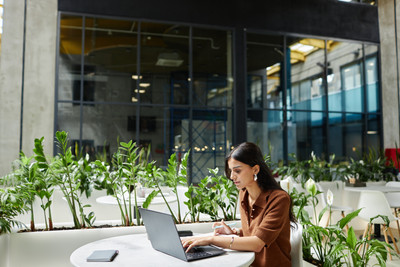Using Large Planters in Your Entryway and by Your Pool
Posted by Jason Wyrwicz on Oct 30th 2020
Planters can dramatically change the aesthetics of your home exterior, adding an element of elegance and grandeur. Whether you’re using plants in your planters or leaving them empty, they can add something special to your home's exterior.
Large planters can make a strong design statement, and you can choose to go dramatic, low-key, or traditional. Your entryway is the first impression of your home for both you and your guests, whereas the pool area is a place for relaxation, comfort, and fun.
Planters and the choice of plants you decide to use can help to create truly stunning spaces. In this post, we'll explain how to use large outdoor planters to your advantage to help you transform your outdoor areas.
Using Large Planters for Your Entryway
Before you start collecting planters for your entryway, there are few things to consider to make sure you use your space as best as possible.
The Type of Planter
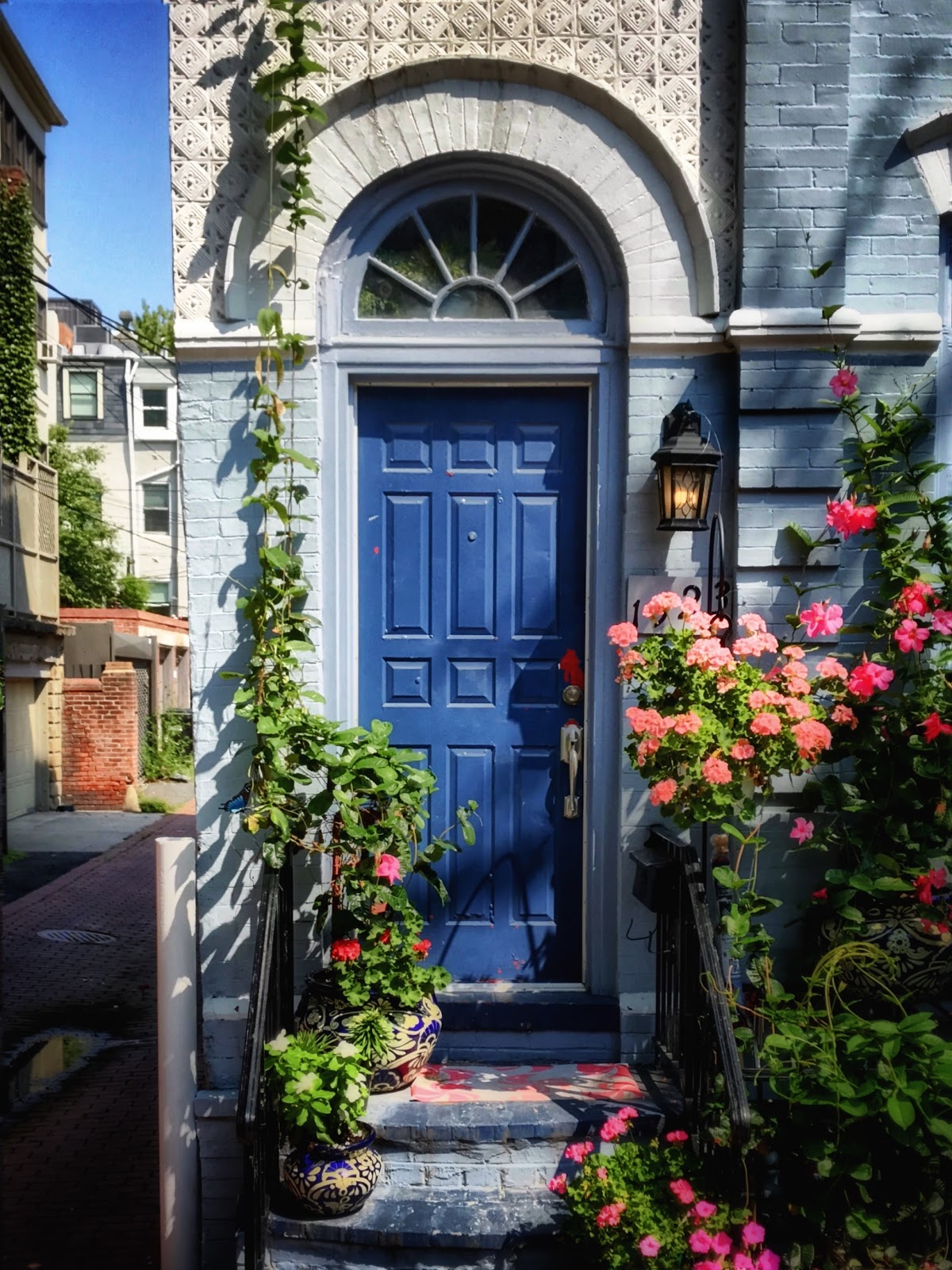
Some outdoor planters can dominate a space, drawing too much attention away from the area. When adding planters to any living area, it's important to consider balance. To do this, you must take into account the planter’s material, color, size, and design.
For example, light-colored planters will get lost against a dark red brick house, and large, dark concrete planters will overpower a light-colored bungalow-style house. You should also consider the weight and movability of the planter. If you need to move them around frequently, you will struggle with heavy concrete planters. A fiberglass planter is a much wiser choice if planter mobility is important to you.
It's also worth considering the amount of time your planters will be exposed to the sun. UV light will slowly fade any color-painted planters made from stone or terracotta. Choosing a metal or fiberglass planter would be useful as they’re light-resistant and remain glossy for many years if maintained properly.
Metal planters can even be customized, so if you're looking for something unique, you may want to consider this material. Metal can be manipulated into almost any shape you desire, allowing you to create imaginative designs.
Placement
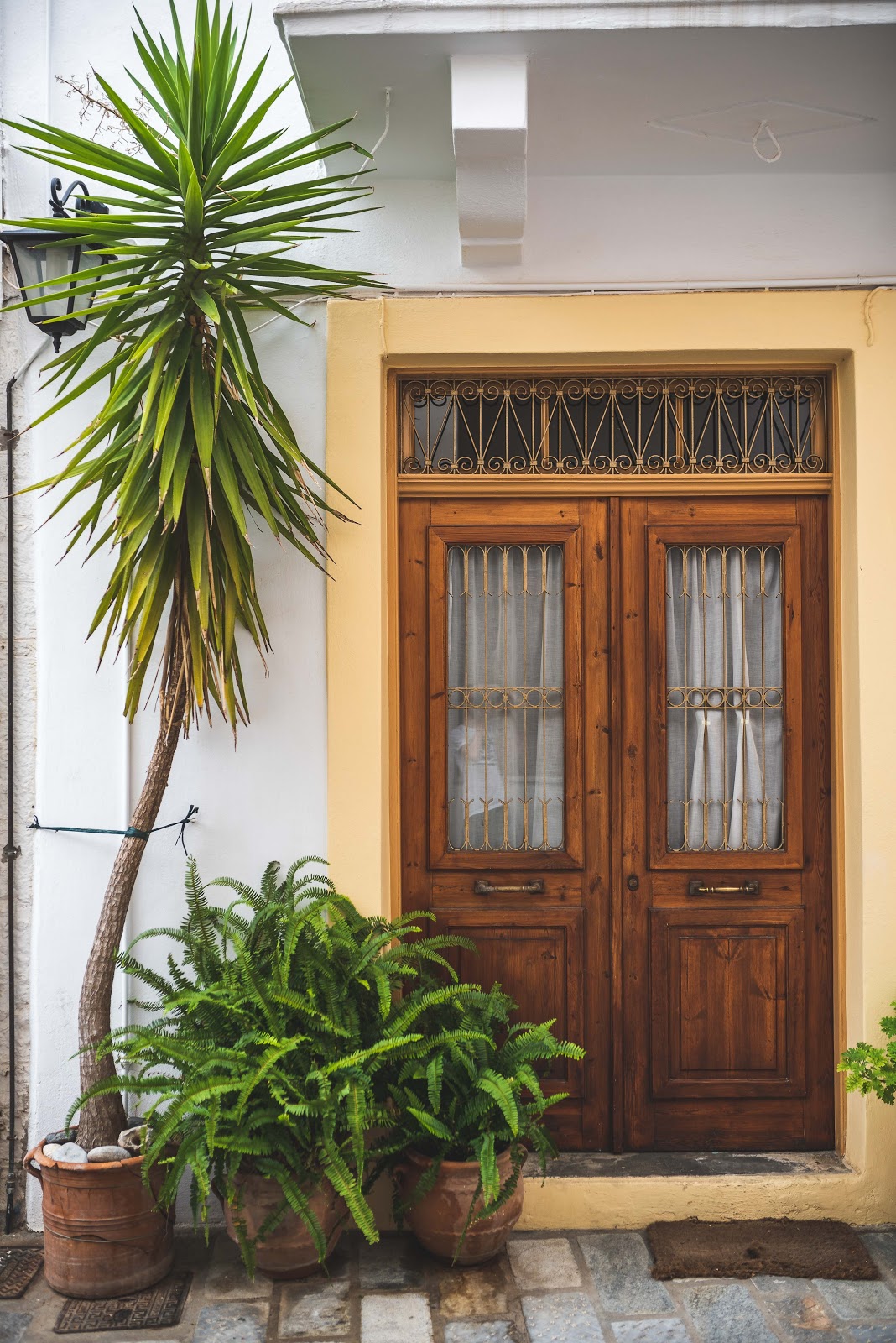
Should you place a planter on either side of the door? How many should you use? This is down to the look you desire, but the most important thing to remember is balancing everything out. Symmetry is a great way to create a visually stunning planter arrangement for your home's entryway.
If you decide you want to go asymmetrical, then remember to balance each side. If you have a large planter on the left, you will need several smaller planters on the right-hand side to create that balance. Several tall planters lined up together can be matched with one big planter on the opposite side.
Remember, the colors of large planters will visually dominate the space. If the large planters are dark, you will need to balance this out with smaller, lightly-colored planters and vice versa.
The Contents
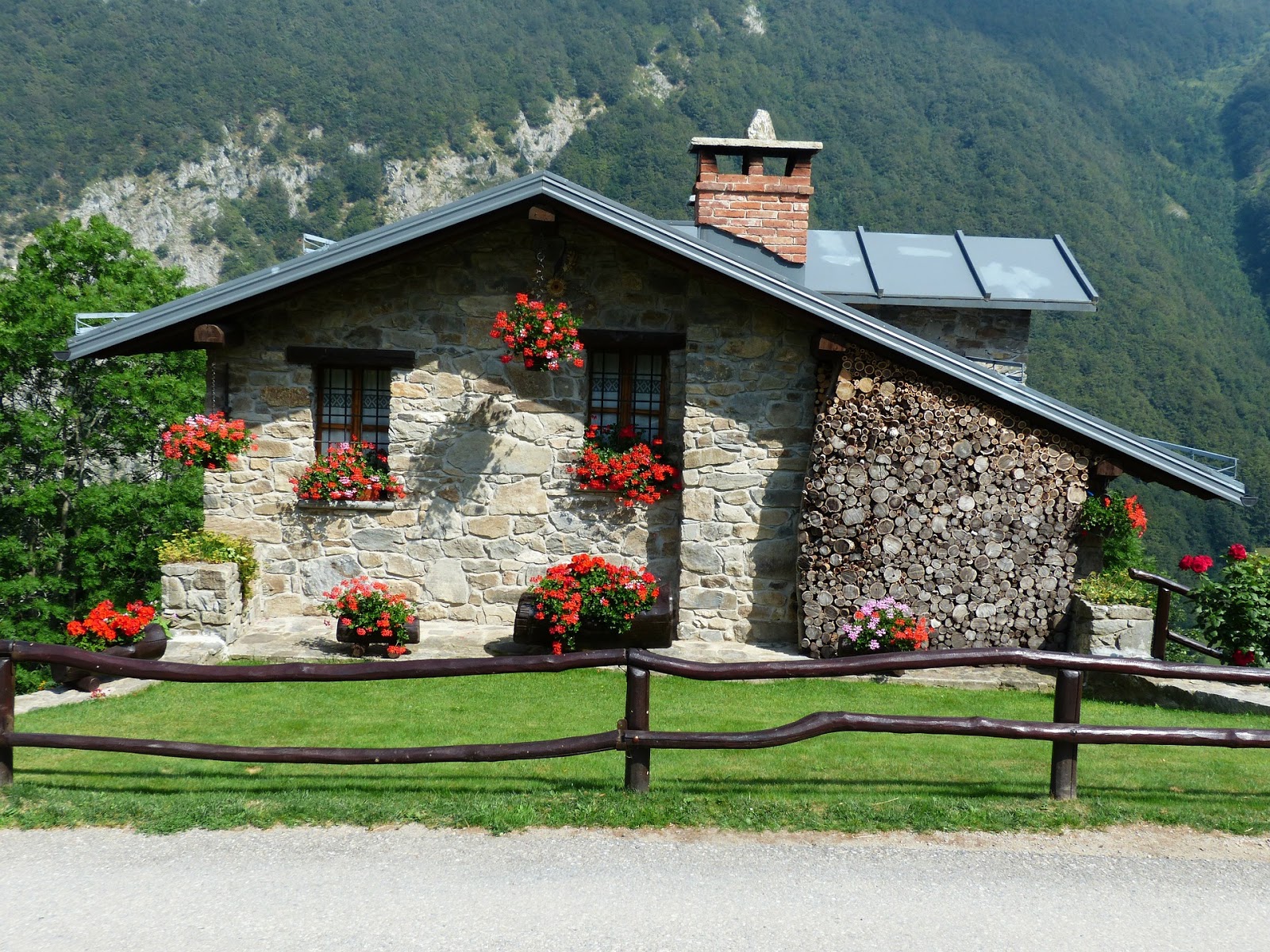
There’s no need to fill your planters if you do not wish too. Large planters look visually pleasing, even with no soil or plants. If you wish to add plants, you must try to balance out the color scheme.
If you choose flowers, consider the longevity of the species you choose. You could start by planting flowers from seeds in the pots, which would allow them to grow healthily with room to spread.
Alternatively, you could go with a pre-grown arrangement from the start. If you do this, you have more control over the layout, color scheme, and the desired look. Be warned, though, the flowers will be more prone to disease from overcrowding with this type of arrangement.
Plants and small trees are also an excellent option for those looking for longevity and minimal maintenance. Having an arrangement of healthy, natural green plants is popular among many homeowners. Consider the growth potential of the plants you choose so you can maintain balance once they have grown out.
Using Large Planters for Your Pool Area
When choosing planters for your pool area, there’s a lot more to consider, as they’re much more vulnerable to the elements.
Type of Planter
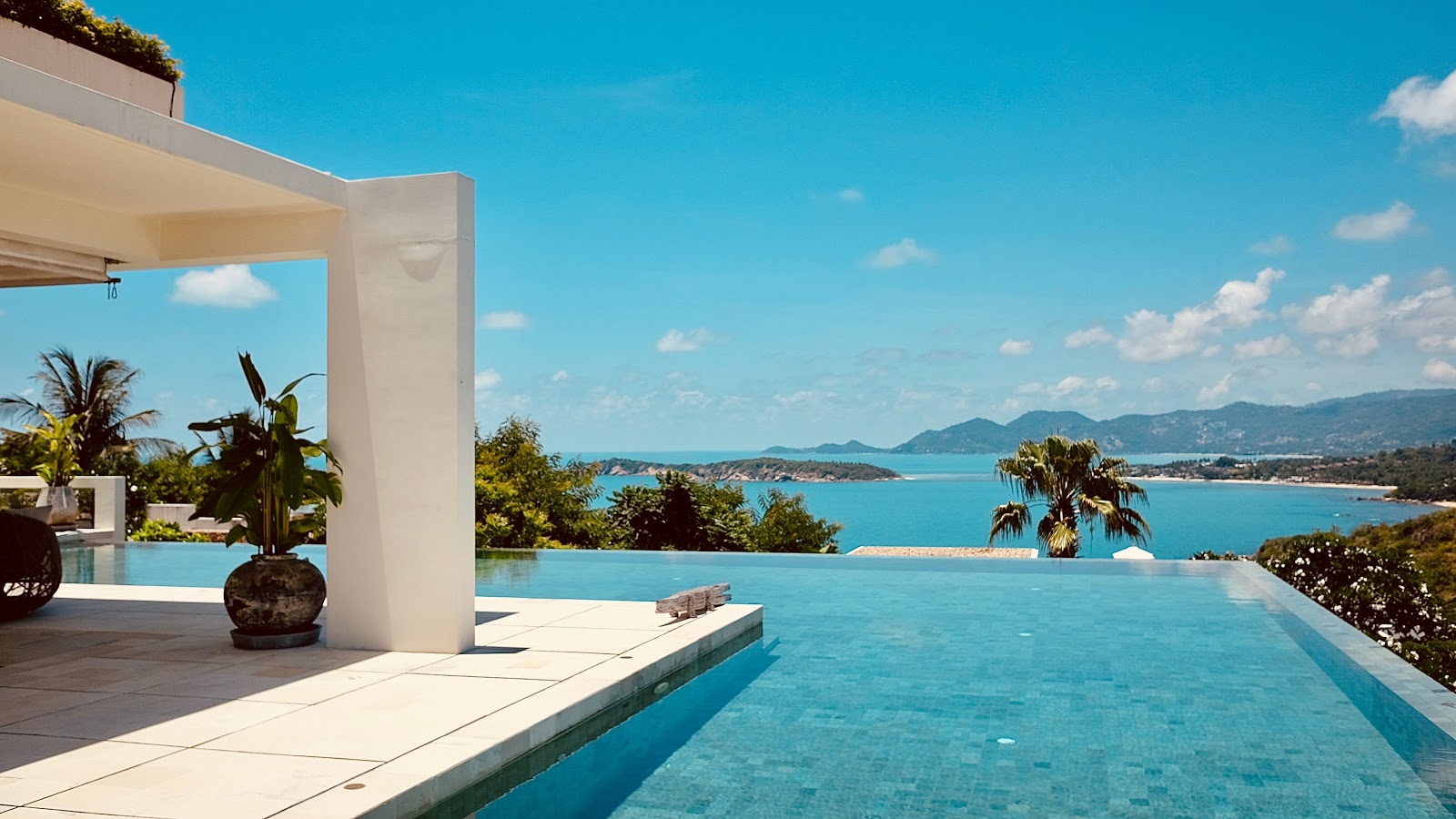
As these planters will be placed in your pool area, deciding on the right material is extremely important. You must consider, first and foremost, whether the planters are waterproof.
“Surely all planters are waterproof? They’re plant pots, after all!” we hear you ask, and you're right. But as these planters will be next to your pool, it's vital to choose the most durable and weather-resistant materials available.
Metal planters and fiberglass planters are your best choice. Both are incredibly durable and won't fade quickly or corrode when exposed to water and UV light over long periods. Resin-based planters are also useful for water-resistance, even against water with high salinity.
As they will spend all of their time outdoors, you will want outdoor planters that are easy to maintain. Pools require enough maintenance without the added trouble of caring for your planters. Metal and fiberglass planters require minimal maintenance and only need a gentle scrub infrequently to keep them looking brand new.
Corrosion on planters is also a big issue. A planter with corrosion will stain the ground it’s placed on, which will damage any paved stonework or wooden decking.
Fiberglass planters and metal planters will never chip, peel, or crack. They're also durable, which means if one of the kids knocks one over, it has a high chance of coming away damage-free.
Placement
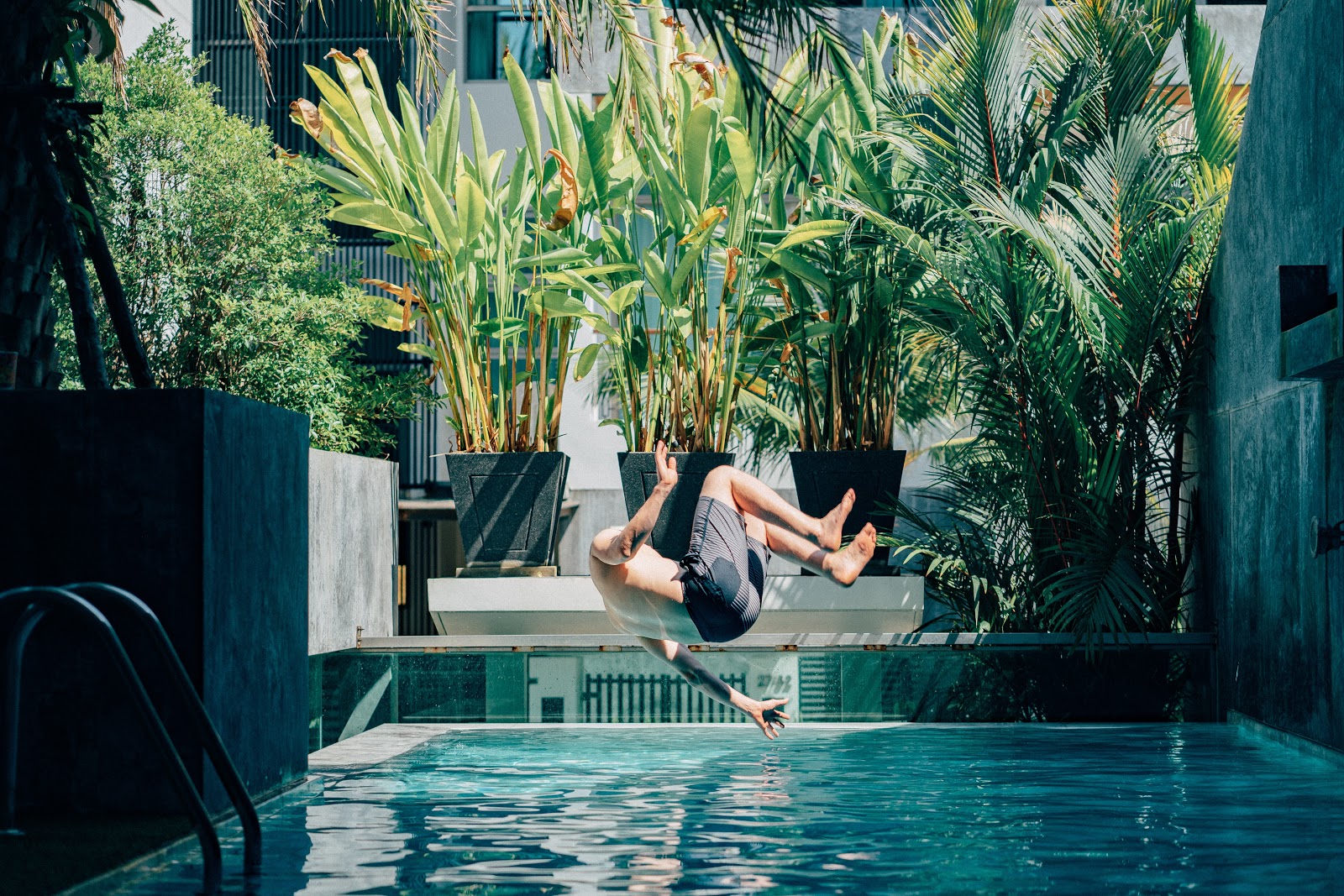
When it comes to the placement of planters for your pool, you have a lot of freedom. They look great when placed in each corner or around the sides of the pool. You can even put them directly next to the pool to create a natural water scene as if you were in a river.
If you have a water feature that pours water back into the pool, you can place your planters on either side to create a waterfall effect.
Consider safety at all times. If you have big, heavy planters, you will need to ensure they’re secure when placed immediately to the side of the pool. You wouldn't want them to fall in and hurt anyone using the swimming pool.
If you enjoy your privacy, you could line the entire circumference of the pool with planters so that you’re free to enjoy the pool without neighbors peeking in.
If you’re planning on potting some large plants or trees, consider the sun's movement throughout the day. This way, you can utilize your planters as shade for those sunbathing on hot summer days.
The Contents
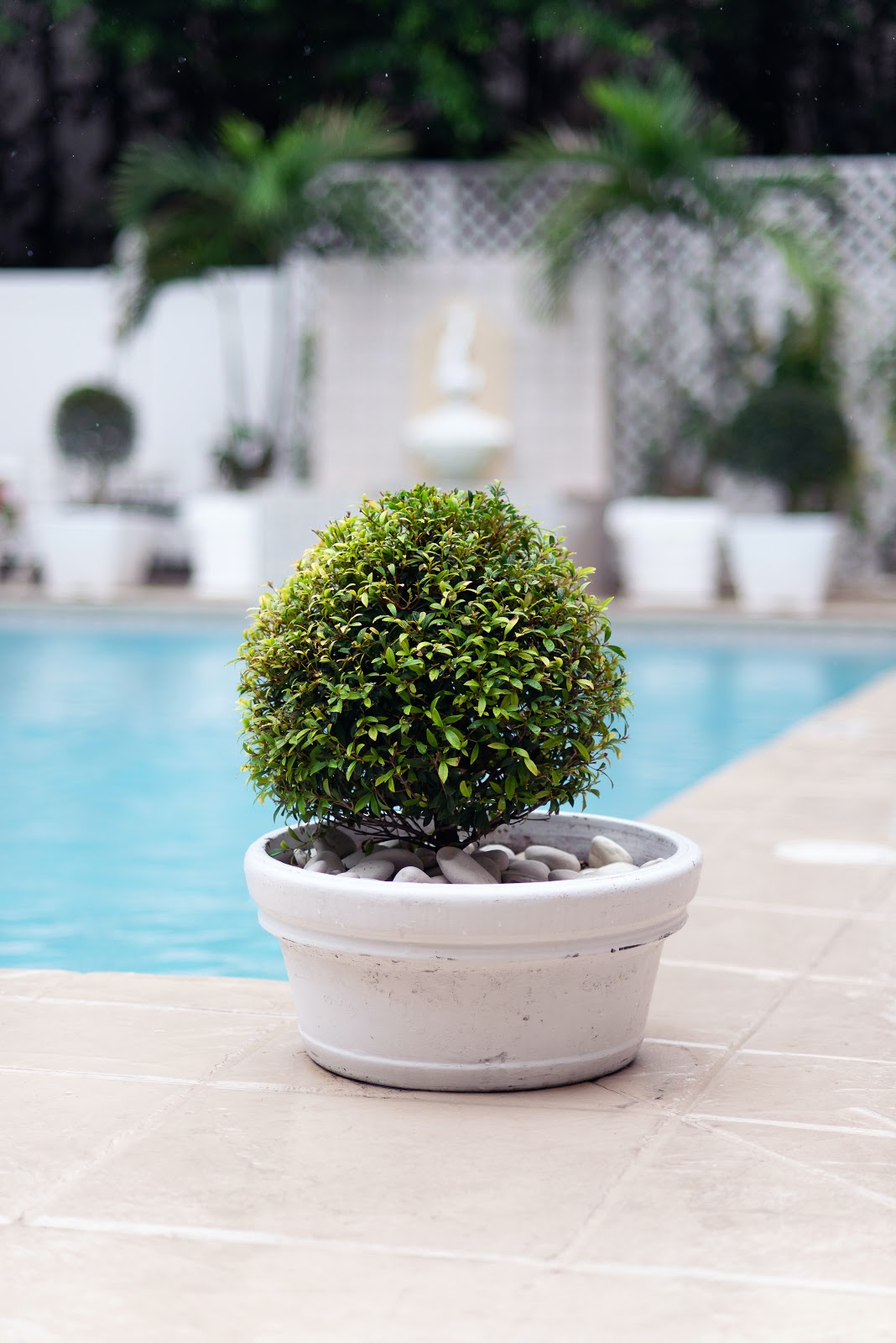
The type of plants you use in your planters surrounding the pool require a lot of thought. Here are some top tips for pool plants:
Avoid Messy Plants
You don't want to spend ten minutes clearing flowers and leaves up each time you want to use the pool. Messy plants that shed their petals or leaves frequently are not a great choice. If you’re using trees, you must also consider the twigs and associated debris that come with them too.
Look for Plants with Large Leaves
Plants with large leaves typically come with less mess and less maintenance, and they can create a jungle feel that is pleasant to relax and swim in.
Small palm trees, cordylines, flax plants, and large-leaved shrubs are ideal for the pool area. You may also want to consider the wind direction if you’re in a particularly windy region. This way, you can place your planters and plants on one side to reduce the amount of debris entering the swimming pool.
Choose Succulent Plants
Succulent plants such as agave, yucca, and aloe are low maintenance and survive well in direct sunlight all year round. The mess is minimal, and they look visually stunning when situated around the pool.
Get Tropical
If you wish to transform your pool area into a tropical paradise, consider adding tropical trees and plants. Small palms, sago palm, and cycads are excellent choices and will transport you to the Caribbean while sitting in your backyard.
Trailing Plants and Vines
For those that wish to create a wild, natural look for their pool area, trailing plants and vines can help you. Trailing plants and vines can grow outside of their planters and flow into neighboring flowers or plants, creating unique and visually stunning scenes.
Some species to consider include germander, tufted evening primrose, blue euphorbia, lantana, and verbena.
Final Thoughts
Whether adding plants to your entryway or pool areas, you have the opportunity to create truly breathtaking spaces using an assortment of outdoor planters. Choose your planters carefully, and consider the materials, shape, color, and maintenance of each planter.
Thinking about adding planters to your entryway or pool area? Browse our large range of pots and planters, and transform your outdoor spaces today. Check out our wholesale planter program for some great planter prices.


